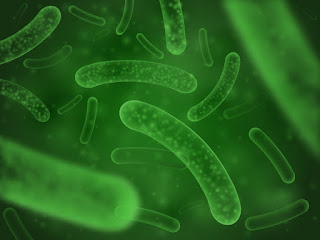Uses of Probiotic Bacillus in The Food Industry
Probiotics are typically described as microbial food supplements that are good for people. The majority of probiotics are members of the lactic acid-producing bacteria group and are typically eaten in the form of yogurt, fermented milk, or other fermented foods. Consuming lactic acid bacteria has a number of health benefits, such as (I) enhancing the immune system, (ii) improving the bioavailability of nutrients, (iii) reducing the symptoms of lactose intolerance, (iv) lowering the prevalence of allergies in susceptible people, and (v) lowering the risk of certain cancers. Probiotic bacillus coagulans may alter gut pH, combat pathogens by producing antimicrobial compounds, compete for nutrients and growth factors as well as pathogen binding and receptor sites, activate immunomodulatory cells, and produce lactase. These are just a few of the potential mechanisms by which probiotics exert their effects. Probiotics' selection criteria, effectiveness, sources of food and supplements, and safety concerns are examined. Probiotics play a crucial part in a healthy diet for both humans and animals, and recent scientific research has confirmed this. Probiotics may also be a way to build a barrier against microbial infection that is safe, affordable, and "natural." Probiotics' role in maintaining good health and preventing disease is reviewed in this research.
Work of probiotics
It's vital to have a basic understanding of digestive system physiology, GI tract microbiology, and probiotics in order to comprehend how they function. As soon as food enters the mouth and stomach, the digestion process begins. The bacteria in the GI tract have the capacity to function in a positive, negative, or neutral way. The digesting process is finished by microbes in the small and large intestines.
Healthy intestinal flora is associated with the existence of specific intestinal bacteria, which are known to create vitamins and are neither pathogenic, putrefactive, or putrefactive in any way. Lactic and acetic acids, which are produced as metabolic byproducts of their growth, have a tendency to reduce the pH of the intestinal contents, which makes the environment unfavorable for pathogenic bacteria. Probiotics may also affect the intestinal mucosa's ability to produce and secrete mucins and other antibacterial peptides, two additional defensive mechanisms. The GI tract also acts as a significant mucosal surface that connects the "inside" and "outside" of the body. Important immune system components interact with microorganisms and foreign antigens that are colonizing or moving through the GI tract through this mucosal interface. The immune system is primed or stimulated for best performance by this interaction. By reducing "translocation," or the transfer of bacteria or antigens from the intestine into the blood stream, the normal microbial occupants of the GI tract help strengthen the barrier function of the intestinal lining. It has been proposed that this activity will lessen infections and perhaps even allergic reactions to dietary antigens.
Selection of probiotics
The ability to: (I) exert a beneficial effect on the host; (ii) withstand incorporation into foods at high cell counts and remain viable throughout the product's shelf life; (iii) withstand transit through the GI tract; (iv) adhere to the intestinal epithelium cell lining and colonize the lumen of the tract; (v) produce antimicrobial substances toward pathogens, and (vi) stabilize the product are the selection criteria for a lactic acid bacteria to be. Probiotics must be nonpathogenic and nontoxic in their creation, have a long shelf life in food or preparations, and contain a significant number of viable cells at the time of ingestion. The lactic acid bacteria, especially Lactobacillus and Bifidobacterium species, have received the greatest attention from researchers and are the most often utilized probiotics.
Health benefits and therapeutic effects of probiotics
Only a small number of the probiotics' alleged positive health effects have substantial evidence to support them, and these are the ones that will be covered in this essay. Diarrhea, gastroenteritis, irritable bowel syndrome, inflammatory bowel disease (IBD; Crohn's disease and ulcerative colitis), cancer, suppressed immune function, insufficient lactase digestion, infant allergies, failure to thrive, hyperlipidaemia, hepatic diseases, Helicobacter pylori infections, and other clinical symptoms have reportedly been treated or may be treated with probiotics. Further research into the usage of probiotics is necessary to determine any potential advantages and potential negative effects.
Nutrient synthesis and bioavailability
It has been demonstrated that several dietary elements are more plentiful, available, and digestible thanks to the action of microbes during the preparation of cultured foods or in the digestive tract. The amount of folic acid in yogurt, Bifidus milk, and kefir increases when food is fermented with lactic acid bacteria. Similar to this, fermentation raises the levels of riboflavin and niacin in yogurt.
Vitamins and enzymes are known to be released into the intestinal lumen by lactic acid bacteria. By producing lactic acid, which lowers the pH of the intestinal contents and aids in preventing the growth of invasive pathogens like Salmonella spp. or strains of E. coli, this exerts synergistic effects on digestion, relieving symptoms of intestinal malabsorption.
Gastric and intestinal tract effect of probiotics
The following section discusses several human studies that demonstrate lactic acid bacteria may lessen the frequency, severity, and duration of several gastrointestinal and intestinal disorders.
Preventative and therapeutic effects against diarrhea
Probiotics are commonly used to prevent and treat diarrheal illnesses, including acute viral and bacterial diarrhea and diarrhea brought on by antibiotic use. These uses have large potential benefits. It has been demonstrated that a number of particular strains, including Lactobacillus GG, Lactobacillus reuteri, and Sacc. boulardii, Bifidobacteria spp., and others have a considerable positive impact on diarrhea, travelers' diarrhea, and rotavirus-induced diarrhea in young children. The probiotic species Lactobacillus spp., L. reuteri, Lactobacillus casei, Saccharomyces boulardii, Bifidobacterium bifidum, and Strep. Thermophiles have the most potential for treating childhood diarrheal disorders. The symptoms of intestinal malabsorption are known to be reduced by the release of a variety of enzymes by lactic acid bacteria into the intestinal lumen.



Comments
Post a Comment